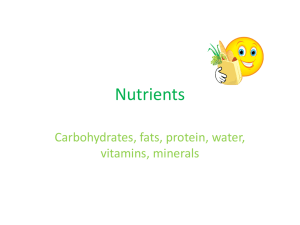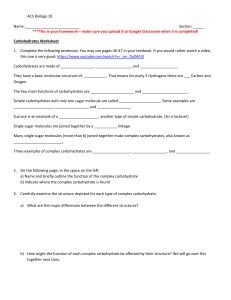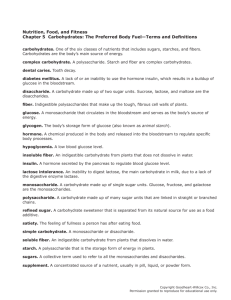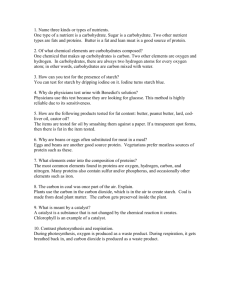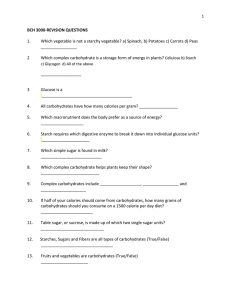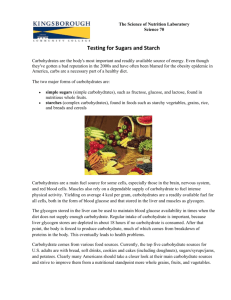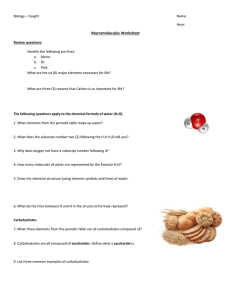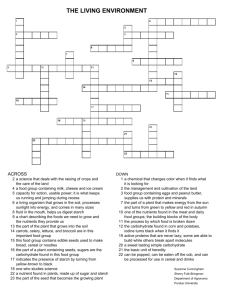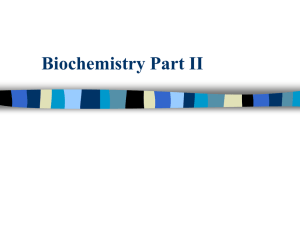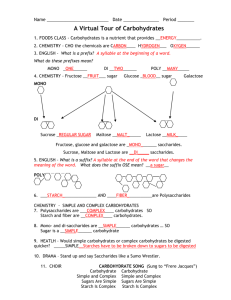Carbohydrate Analysis
advertisement
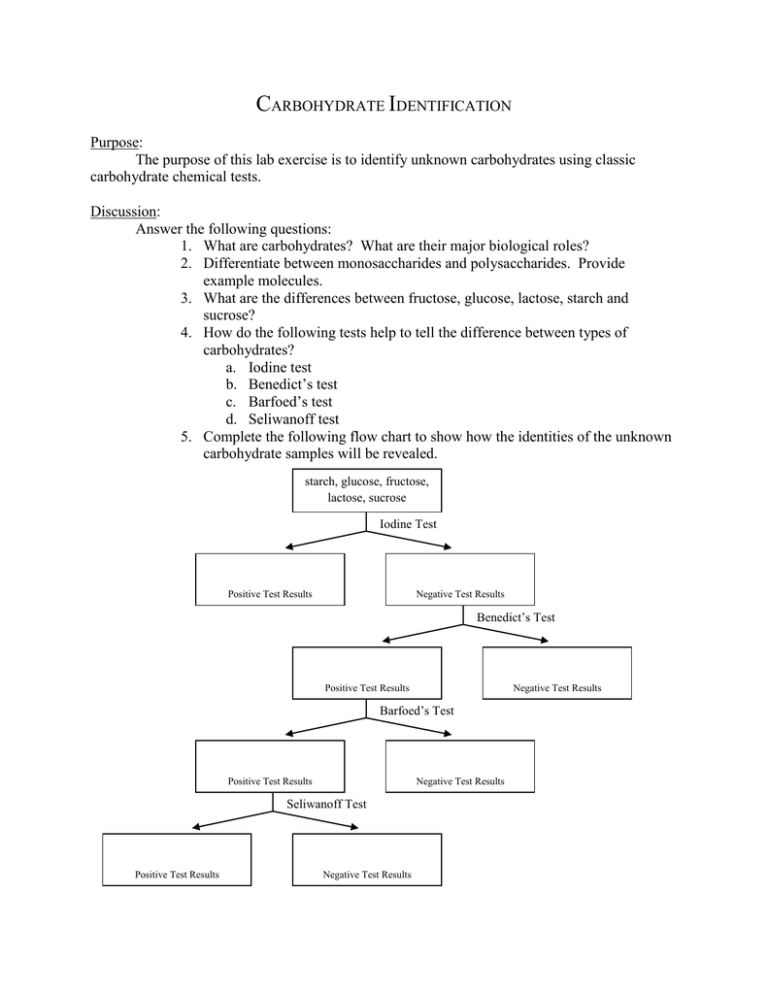
CARBOHYDRATE IDENTIFICATION Purpose: The purpose of this lab exercise is to identify unknown carbohydrates using classic carbohydrate chemical tests. Discussion: Answer the following questions: 1. What are carbohydrates? What are their major biological roles? 2. Differentiate between monosaccharides and polysaccharides. Provide example molecules. 3. What are the differences between fructose, glucose, lactose, starch and sucrose? 4. How do the following tests help to tell the difference between types of carbohydrates? a. Iodine test b. Benedict’s test c. Barfoed’s test d. Seliwanoff test 5. Complete the following flow chart to show how the identities of the unknown carbohydrate samples will be revealed. starch, glucose, fructose, lactose, sucrose Iodine Test Positive Test Results Negative Test Results Benedict’s Test Positive Test Results Negative Test Results Barfoed’s Test Positive Test Results Negative Test Results Seliwanoff Test Positive Test Results Negative Test Results Objectives: In this lab, you will… 1. develop a procedure that uses the four tests to identify the five carbohydrates. 2. run a series of chemical tests on an unknown carbohydrate. 3. use the results of the chemical tests to identify the unknown carbohydrate. Materials: Chemicals: Unknown carbohydrate solutions: Fructose Glucose Lactose Starch Sucrose Test solutions: Iodine solution Benedict’s solution Barfoed’s solution Seliwanoff reagent Safety: A number of solutions are irritants, moderately toxic and corrosive. Handle all solutions with extreme care. Wear safety goggles at all times, and report spills immediately. Procedure: 1. Develop the procedure and get it approved before lab day. 2. Run the approved procedure on lab day. 3. Hand in the notebook and full report one week after lab day. Data: Analysis: Error: Construct a data table for five chemicals being run through four tests. Use your flow chart to identify the carbohydrates. Explain why each carbohydrate exhibited the results for each test. Ask your instructor for the true identities of the unknown carbohydrates and discuss sources of error (even if all samples were correctly identified).
